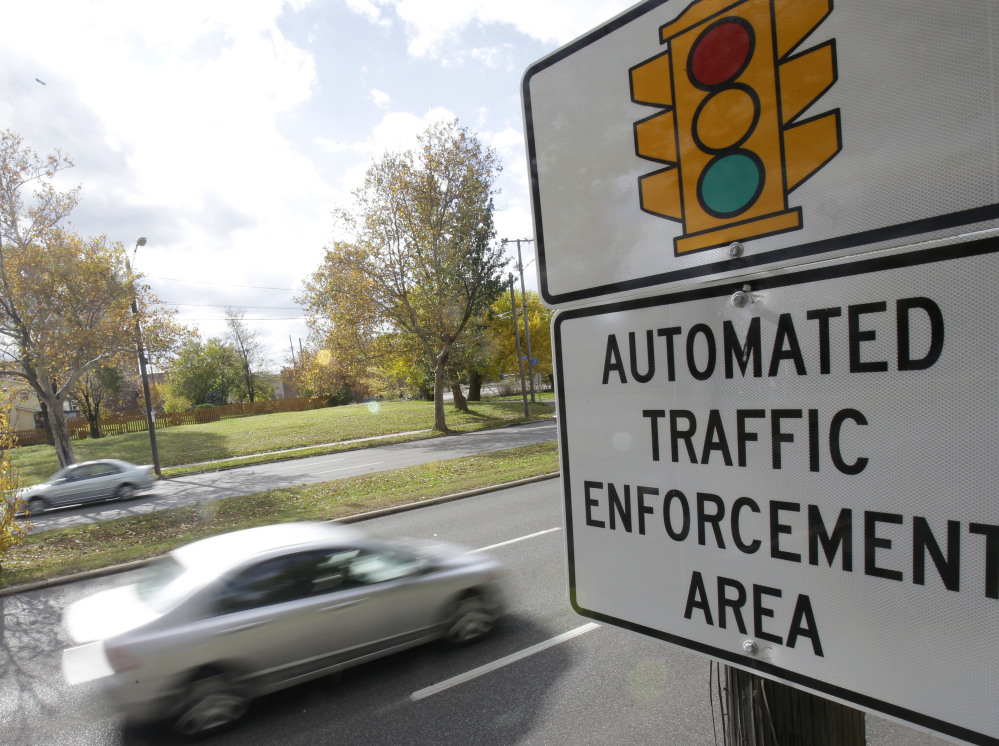CINCINNATI — A divided Ohio Supreme Court on Thursday again upheld use of traffic camera enforcement by the state’s municipalities, reversing a lower court after a year of legal setbacks for camera advocates.
The Supreme Court justices ruled 4-3 to stick to their 2008 ruling, in a challenge to Akron’s cameras, that cities have local “home-rule authority” to use cameras to catch speeders and red light-runners and to handle drivers’ appeals through administrative procedures. A lower-level appeals court had agreed with a motorist’s contention that Toledo improperly bypassed the courts by handling ticket cases through an administrative hearing procedure and violated his due process rights.
Justice Sharon Kennedy wrote for the majority that the court reaffirms that Ohio’s constitution grants “municipalities the authority to protect the safety and well-being of their citizens by establishing automated systems for imposing civil liability on traffic-law violators.”
Justice William O’Neill disagreed, saying the Toledo case wasn’t about home rule, but about courts being usurped.
“A hearing officer is simply not a substitute for a municipal court judge who has been elected to preside over judicial matters,” O’Neill wrote.
Andrew Mayle, attorney for motorist Bradley Walker, said he’ll ask the narrowly split court to take another look because of broad implications.
“This is a case they should seriously reconsider because of all the negative consequences that could flow from it,” Mayle said, warning that cities could expand administrative procedures to other matters handled by courts.
Among the majority was Judge W. Scott Gwin, a state appeals court judge sitting in place of Justice Terrence O’Donnell after O’Donnell recused himself for an unspecified reason before June 11 oral arguments.
Camera advocates say they free up police for other crime fighting and make communities safer. Foes contend they are meant to make money.
“I think it certainly locally reinforced our efforts to try to keep our streets safe,” Adam Loukx, Toledo’s law director, said of the ruling. “For those who are saying it’s a revenue maker, it isn’t if you don’t run the lights or drive in great excess of the speed limit.”
Ohio legislators just passed a bill to require a police officer’s presence when camera enforcement is used. Some cities have discussed a legal challenge, and Loukx said he hopes Thursday’s ruling will cause Gov. John Kasich to reject the measure. Messages for comment were left Thursday for a Kasich spokesman.
Walker, a Paducah, Kentucky, businessman, was ticketed in Toledo for speeding in 2009 and paid a $120 fine before deciding to sue. Toledo’s camera vendor and co-defendant, Redflex Traffic Systems of Phoenix, Arizona, said it has operated camera systems in Ohio for more than a decade and believes it has helped public safety.
Hundreds of communities across the nation use automated photo enforcement.
Send questions/comments to the editors.



Success. Please wait for the page to reload. If the page does not reload within 5 seconds, please refresh the page.
Enter your email and password to access comments.
Hi, to comment on stories you must . This profile is in addition to your subscription and website login.
Already have a commenting profile? .
Invalid username/password.
Please check your email to confirm and complete your registration.
Only subscribers are eligible to post comments. Please subscribe or login first for digital access. Here’s why.
Use the form below to reset your password. When you've submitted your account email, we will send an email with a reset code.